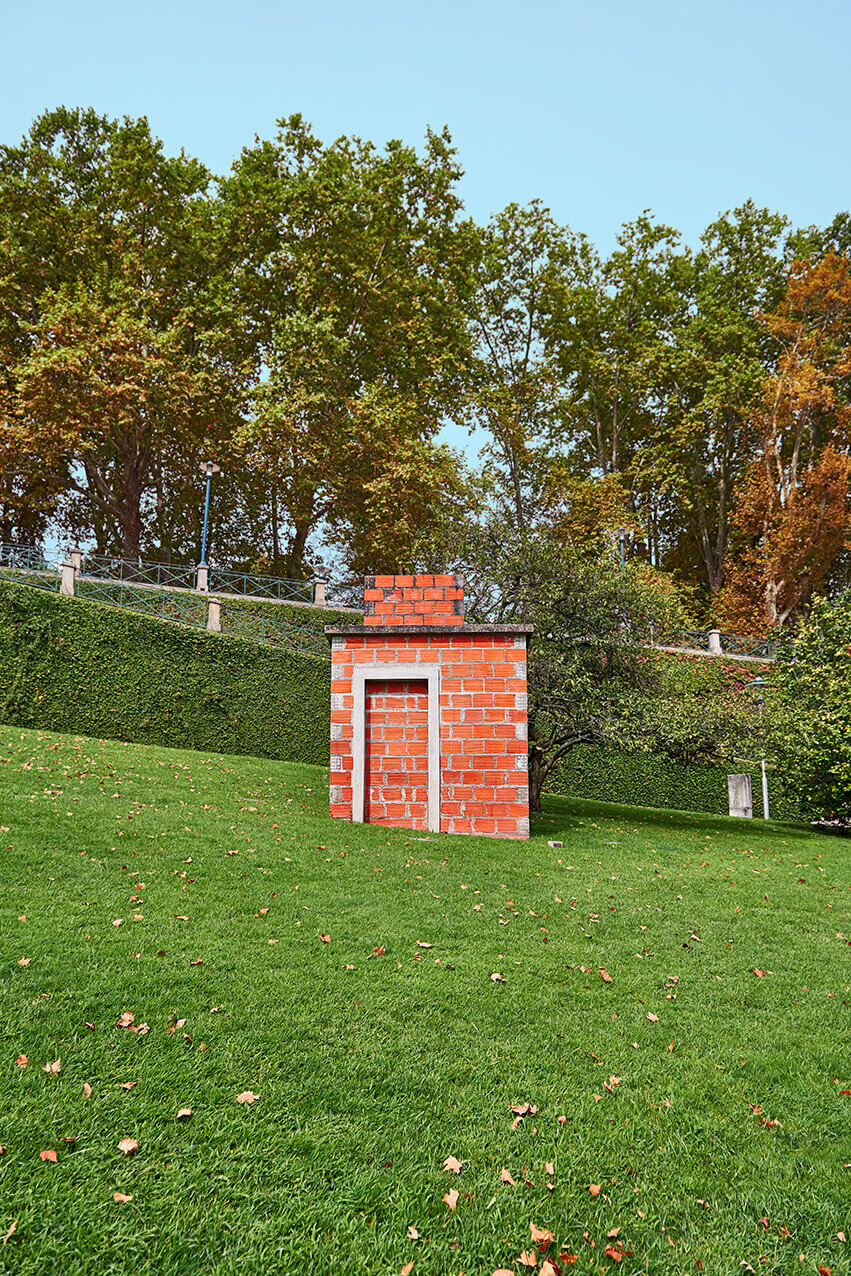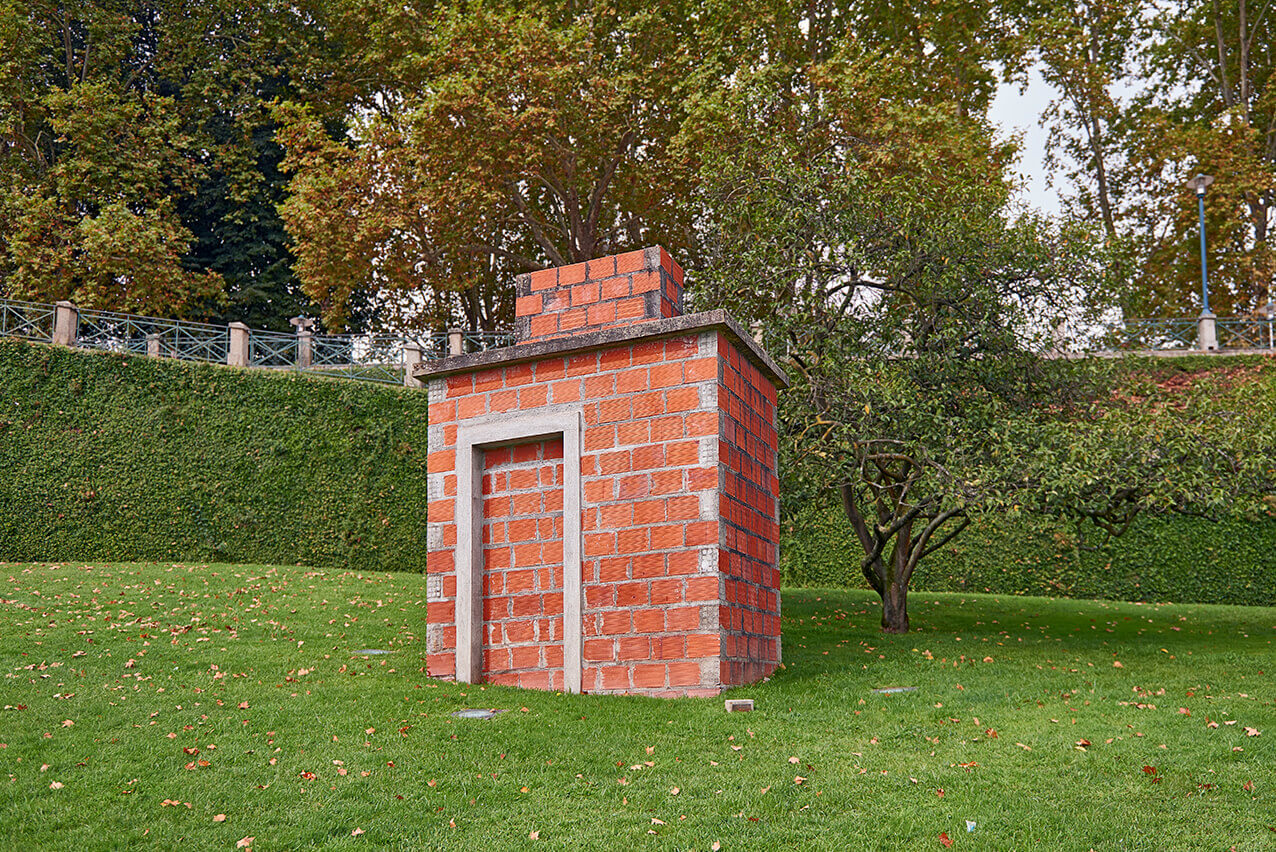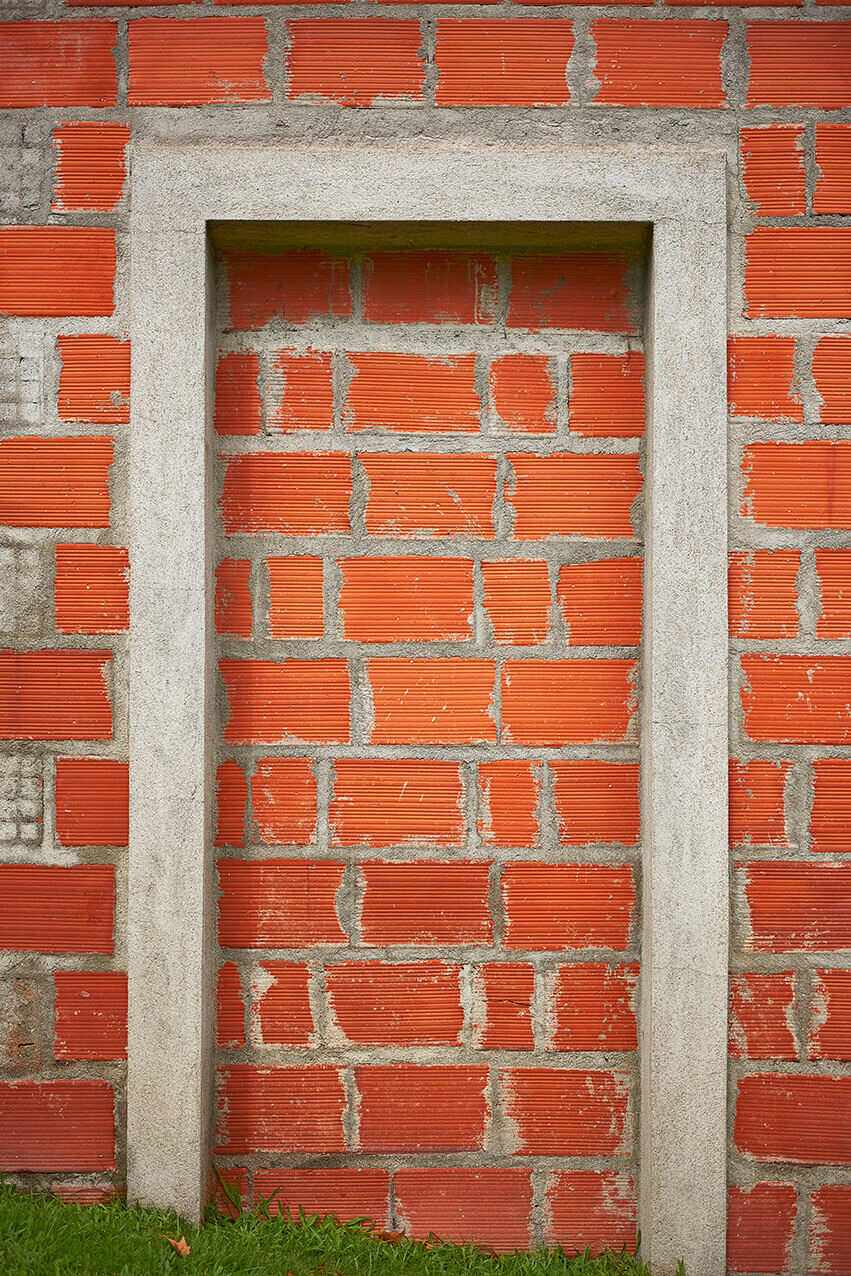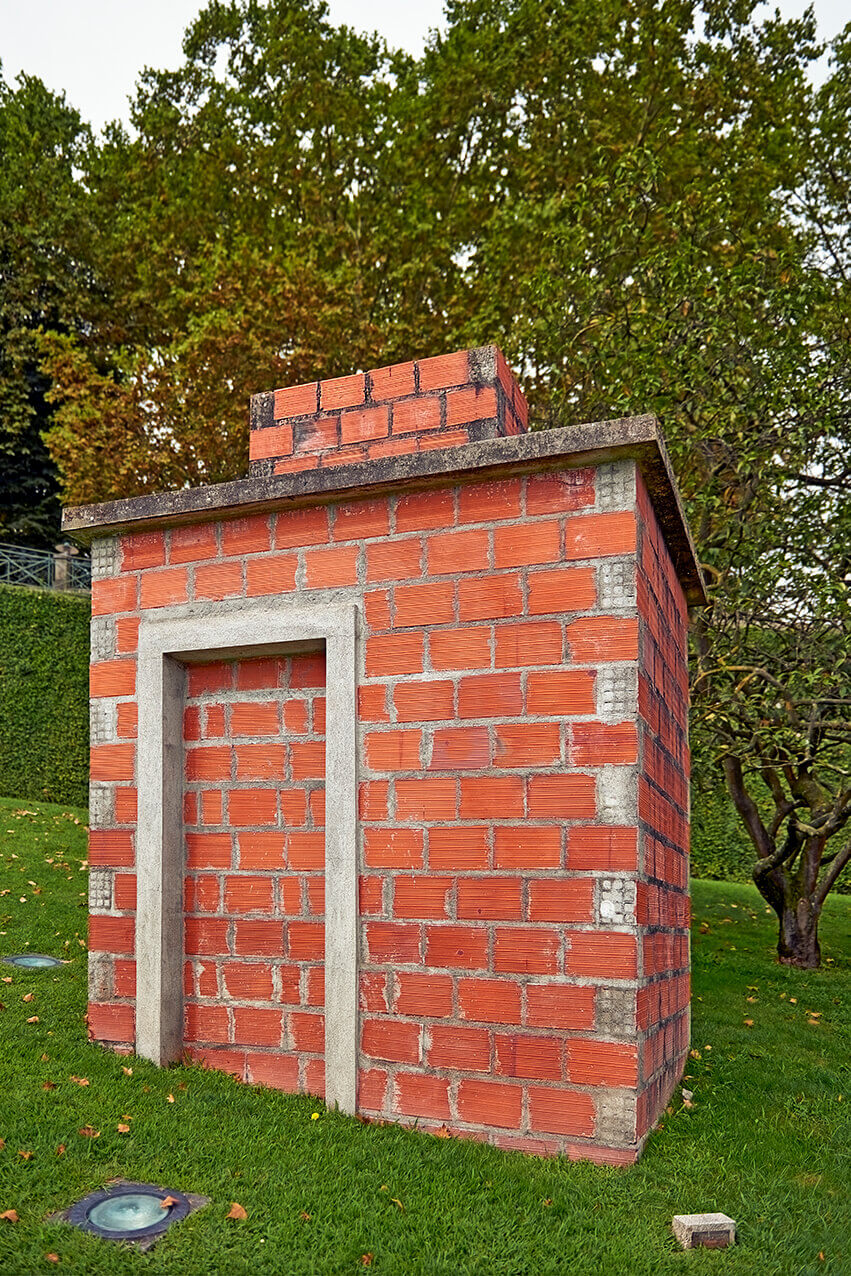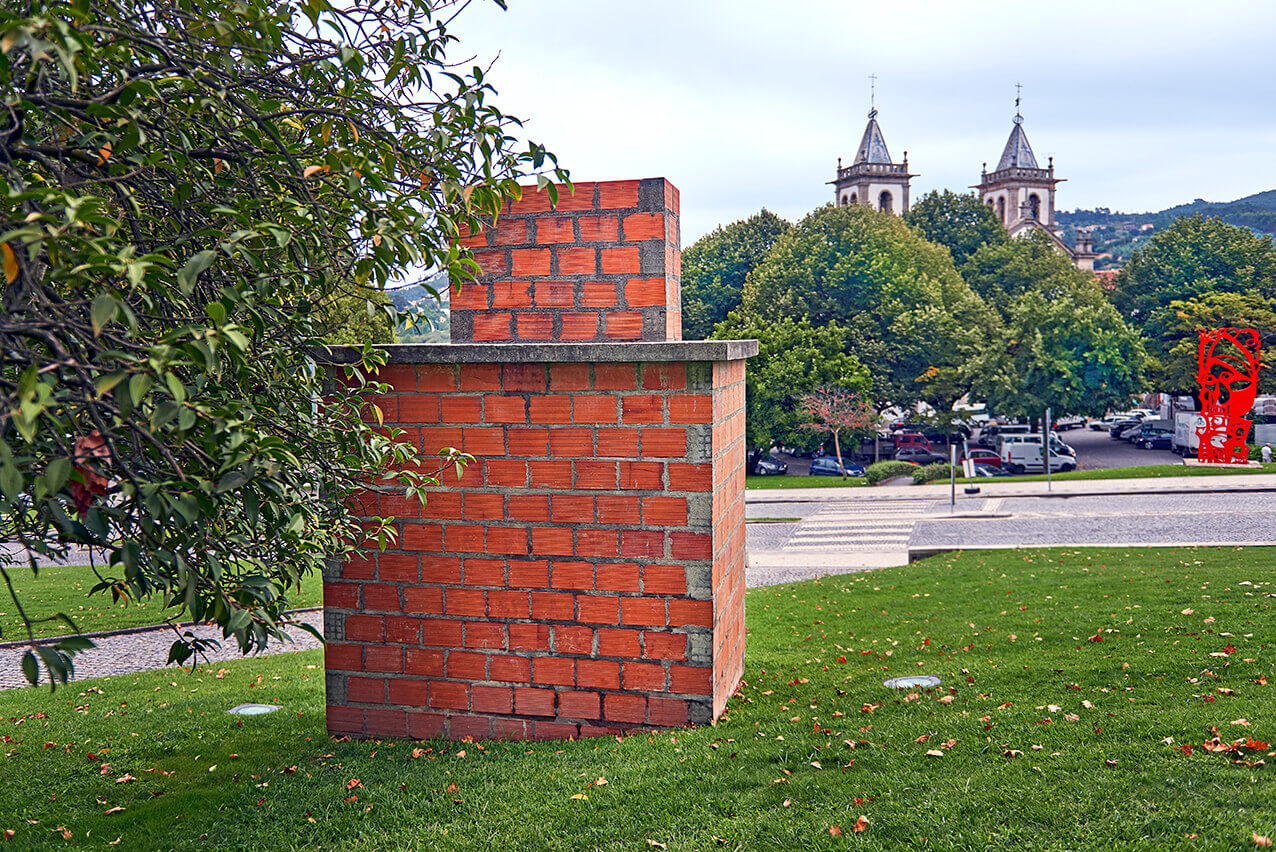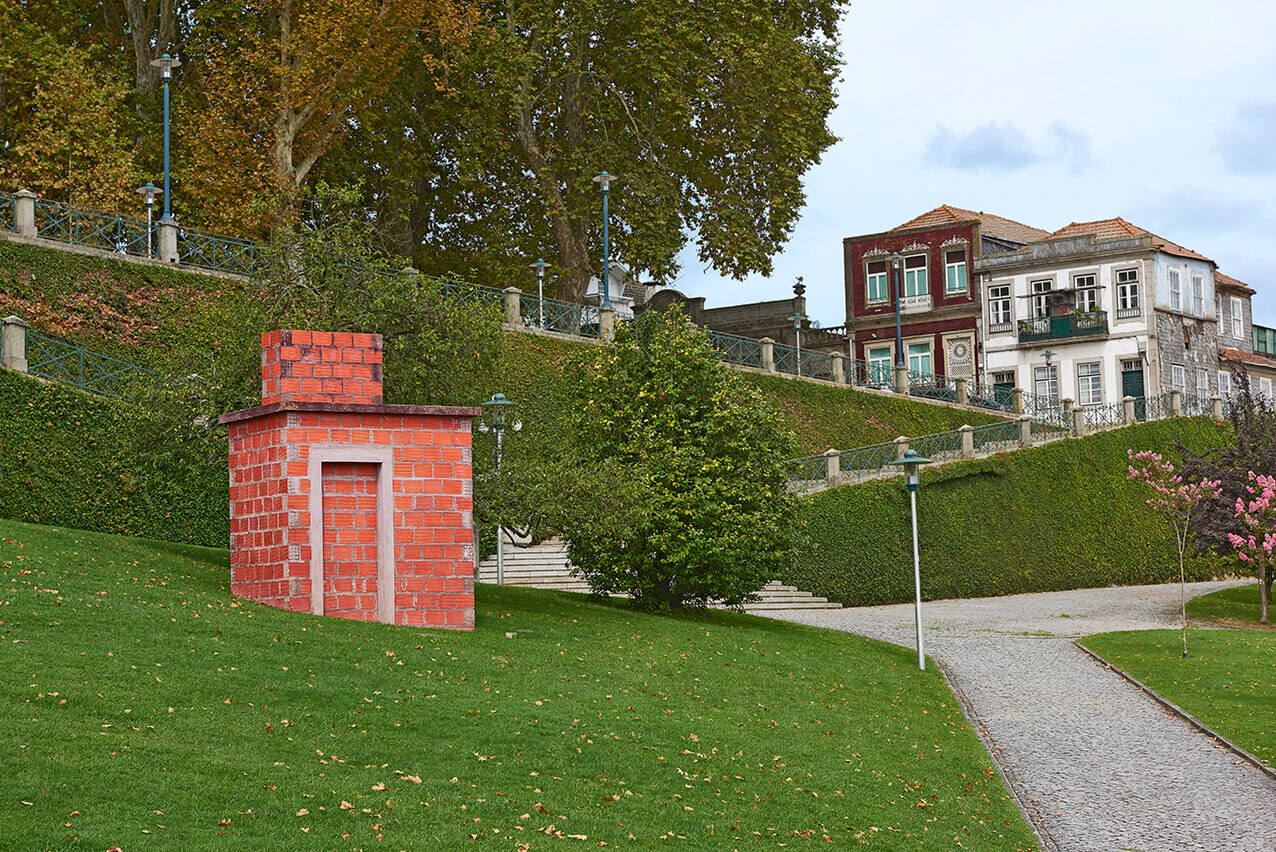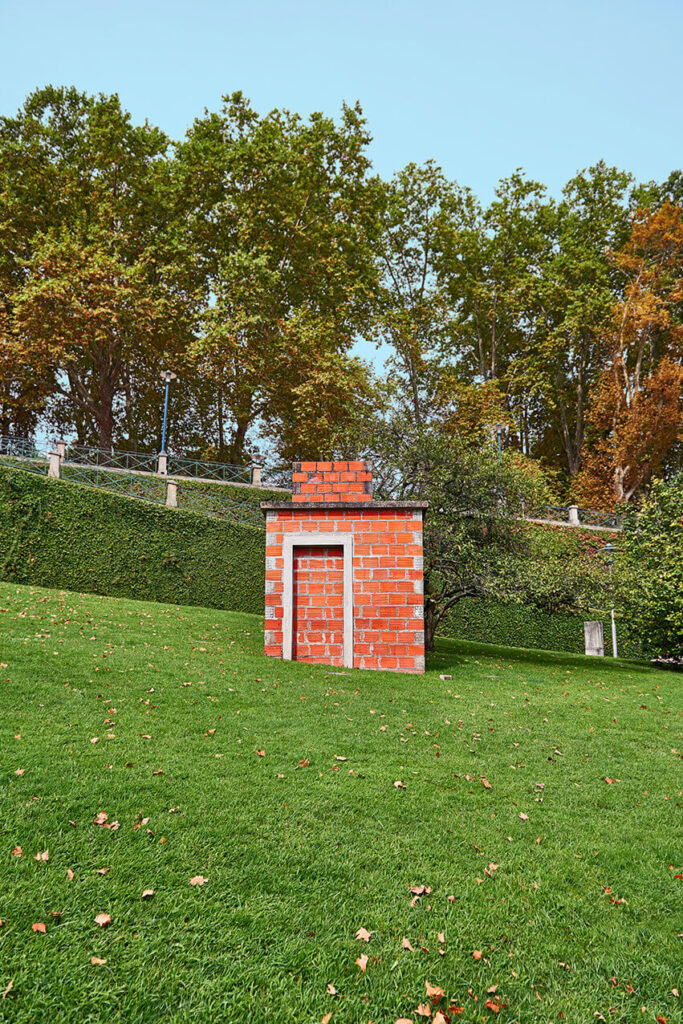
33
A sculpture for Santo Tirso
2001
Material
Ceramic brick and concrete
Description
Pedro Cabrita Reis became known in the 1980s as an unsubmissive artist who does not subject himself to any particular discipline, technique or material. One of the most prestigious contemporary Portuguese artists, Reis’ distinctive poetic language has strong anthropological traits. With an acute sense of space occupation, he comes close to the concept of installation, in which fragmentary household objects disrupt relatively abstract structures.
The use of a wide variety of simple materials (wood, glass, plastic, plexiglass, rubber, gesso, metal, linen, canvas and felt) and the combined memories of everyday gestures and actions highlight the strong metaphorical impetus often shown by his work. In addition, the recurring use of contrasts between light and shadow, or opacity and transparency, carry the weight of grave meditation about the human existence, i.e., life and death. Reis himself has already defined himself as a “creator of memory”, which reasserts the potential for his works to be read as moments of essential introspection before the inevitable transience of life.
For the 6th Santo Tirso International Symposium of Contemporary Sculpture, Pedro Cabrita Reis built a small shack with materials and techniques employed in masonry, leaving exposed, without any adornment, the ordinary bricks used in its construction, which emphasises the work’s precarious nature and pseudo-utilitarian purpose, in contrast with the rest of the sculptures in the same gardened slope. Unlike minimalist sculpture, which would have kept this sort of figure in a non referential limbo, here the outlined door frame (though walled up) gives the shack away and flaunts the spurious nature of the construction. Its avant-gardism, however, lies in the piece’s capacity for positioning the viewer face to face with a two-fold question: on the one hand, its unfinished, perhaps moribund, appearance (resembling many walled-up houses after the eviction of their tenants), and, on the other, the curiosity aroused by what may be hidden inside.
17 years later…
In 2001, the late Alberto Carneiro invited me to participate in his sculpture symposium project in Santo Tirso. I couldn’t say no to Alberto. His enthusiasm, his contagious energy, his unwavering good humor and the committed rigor of his thoughts and actions were, more than personal characteristics, a complete way of being in life like others, an inner place from which the strength and intelligence of his Art burst forth.
It was with great pleasure that I made this piece for him, “A sculpture for Santo Tirso”, which was impeccably made by the council technicians, according to my drawings, and in the place I chose, near the waterfall, a powerful and beautiful “object” in the city that gives the place a special magic.
“A sculpture for Santo Tirso” came from the South to the North. I came across it during one of those motorcycle rides I like to take on small roads, far from the monotonous speed of the motorways. I saw it on some plain in the Alentejo, at the end of a torrid day. It was a small, rough-hewn house made of bricks, set back from the road, in the middle of a dry plain, almost without trees. It probably housed an irrigation engine, but I couldn’t get close. The barbed wire surrounding the land kept me away.
I sketched a quick drawing from afar on a piece of paper that I would later lose during that trip, but with the photo I had also taken I was able, later, back in the studio in Lisbon, to draw the project again and send it to Alberto who, every other day, called me to find out “… how things were going…”.
I calculated the measurements “by eye”, and the sculpture that I had begun on a motorbike trip through the Alentejo found its rightful place in Santo Tirso. However, I never managed to finish the work at that time. In conversation with Alberto, it was agreed that I would later stop in Santo Tirso to complete the work.
17 years have passed, Alberto is no longer here to go and have the “party” we had planned to celebrate the sculpture. Now I will have to do it with other friends to celebrate Alberto.
In a fun and somewhat affectionate way, “A sculpture for Santo Tirso” is known locally as “A Casa do Motor”, a popular name that (after all, are there coincidences, destinies? perhaps… we will never know.), matches the original function of the model that is its origin, which I imagine could still be in that same place in Alentejo where I saw it and to which I have never returned.
Now that, 17 years later, the Work is finally finished, perhaps I will make that trip again one of these days. I will be able to see which is better, the Model or the Work.
All works of art are a testament to the passage of time. The “skin” of “A sculpture for Santo Tirso” now reveals the erosion that this passage leaves as a mark, and if the marks of this passage can be read on our bodies, at least in art, we know that it will last long beyond our brief and fleeting time.
Pedro Cabrita Reis
Lisbon, 26.06.2018
